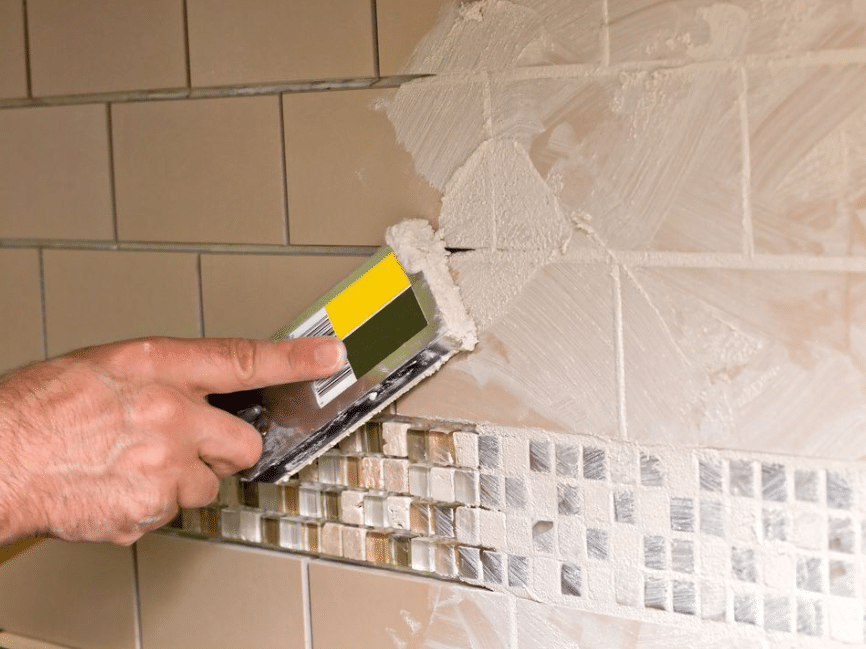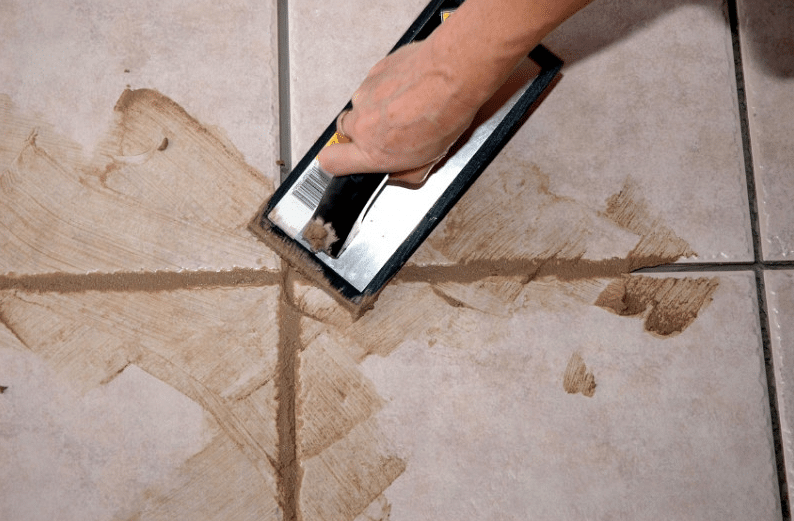Grout Remover is a dense fluid that is used to fill gaps or used as reinforcement in existing structures. Grout is generally a mixture of water, cement, and sand and is employed in pressure grouting, embedding rebar in masonry walls, connecting sections of pre-cast concrete, filling voids, and sealing joints such as those between tiles.
The Ceramic Tile Institute of America says that colored grout, what you are most likely to encounter, is “commercially prepared grout consisting of a carefully graded aggregate, Portland cement, water dispersing agents, plasticizers and colorfast pigments”. So, for the layman, what is important in that definition is the combination of cement, water, and colorant.

Common uses for grout in the household include filling in tiles of shower floors and kitchen tiles. It is often color-tinted when it has to be kept visible and sometimes includes fine gravel when being used to fill large spaces (such as the cores of concrete blocks). Unlike other structural pastes such as plaster or joint compound, correctly mixed and applied grout forms a water-resistant seal.
Read Also: DIY Kitchen Island With Seating Plan & Cost
Grout Cleaner
Grout-Eez Super Heavy-Duty Grout Cleaner
This professional-strength formula is about as easy to use as it gets—just spray it on, wait 10 minutes, then wipe away whatever dirt and grime are lurking in your grout.
Black Diamond Stoneworks Ultimate Grout Cleaner
It attacks grease, oil, and soap deposits with a vengeance. The acid-free formula is safe for ceramic, marble, and porcelain tiles. To use, you spray it on, wait for one to three minutes, then use a brush to loosen and rinse it off.
Soft Scrub With Bleach Gel
For a cleaner that will leave your grout gleaming and tackle the rest of your house too, customers swear by Soft Scrub With Bleach Gel. The gel formula is great for getting deep into those crevices and leaves them looking brighter and whiter
Grout Sealer
Grout Sealer is an economical, easy-to-apply, penetrating sealer that resists most common oil-based and water-based stains. Unlike other sealers, it will not leave a difficult-to-remove residue on the surface. Low odor, water-based formula.
How To Grout Remover
Choose a Grout Color
You’ll want to pick one that complements the color of your tiles. For a strong and colorfast grout, get the right consistency by using as little water as possible.
Apply Grout
Pour a quart to half a gallon of grout on the tiles. Holding a hard-edged rubber grout float at a 45-degree angle, spread the material in sweeping arcs, pressing it into the joints to fill them completely.

Hold Grout Float at 90-Degree Angle
Sweep the float diagonally across the tiles to remove any excess grout.
Wipe Tile With a Damp Sponge
Wait a few minutes while the grout begins to harden. Wipe the tiles in a circular motion with a damp sponge, taking care not to drag out any of the grout from the corners of the tiles.
Use a Damp Cloth to Remove the Haze
Once the grout has hardened, the tiles will be left with a slight haze on them. Clean it up by going over the area lightly with a damp cloth, then buff immediately with a dry cloth.
Let Grout Dry and Then Apply Sealer
Let the grout dry for the length of time recommended by the manufacturer before applying the sealer. Spread the sealer with a small paintbrush or a sealer applicator. Clean off any smears within the first five minutes. Then let the grout dry for at least 24 hours.
Caulk Along Baseboards and Walls
It will flex if the floor expands or contracts as the weather changes. In wet areas, in front of a bathtub or shower, or wherever the expansion gap will not be covered with shoe molding, fill the gap with caulk and smooth with a wet finger.
Mapei Grout
MAPEI is an Italian company founded in 1937 by Rodolfo Squinzi in Milan, Italy. It evolved from a small wall paint producer into a worldwide producer of adhesives, thin sets, and sealants for buildings.
Epoxy Grout
Unlike cement grout, which is made from a cementitious powder mix, epoxy grout is made from epoxy resins and a filler powder. The grout is extremely durable and almost completely stainproof. Regular grout isn’t waterproof, so unlike epoxy grout, it can absorb water when it’s wet and stain easily.
Sanded Vs Unsanded Grout
The main difference between unsanded and sanded grout is the presence or absence of sand. Unsanded cement-based grout is a smooth mixture of Portland cement, powdered pigments, and water. Epoxy grouts are made of resin and hardener. Sanded cement-based grout and sanded epoxy grouts are basically the same as the previously mentioned mixtures but with sand added. The sand thickens the grout to prevent shrinking in the joints.
Grout Remover Tool
DEWALT DWE315K Oscillating Tool
- Removes grout quickly with less dust
- Wide range of applications
- Powerful 3 amp motor
- Bright LED light for working in a dark area
Dremel 4000-2/30 Rotary Tool
- Ability to handle detailed work in tight spaces
- Easy to use
- Convenient speed control
Grout Grabber GG001 Grout Removal Tool for Reciprocating Saws
- Fits most reciprocating saws or Sawzall
- Accommodates any joint size
- Produces a minimum amount of dust
Why Is Grout Needed?
Grout is a necessary and integral part of many tile jobs for several reasons: It keeps moisture out of the substrate, helps keep tile lines straight, and prevents tiles from rubbing against one another and cracking.
Can You Grout On Top Of Grout?
ANSWER – It is possible to grout over existing grout if there is enough depth to do so. 1/8 inch depth may or may not be adequate depending on the type of grout used. A latex modified grout may work, but you have to properly clean the existing grout to ensure the new grout adequately bonds.
Is Grout Stronger Than Concrete?
In addition, coarse grout contains larger aggregates than mortar or fine grout. Concrete shouldn’t be substituted for grout either. The coarse aggregate in concrete generally is too large for most masonry grout cavities. Also, in cast-in-place concrete, low water-cement ratios are important for strength.
Is Tile Grout Toxic?
Grout Hazards. Grout comprised of Portland cement, aggregates, limestone, and often silica poses a health hazard through inhalation and skin contact. The dust can also cause eye irritation and even blindness. Exposure may result in short- or long-term physical problems, such as burns or respiratory disorders.




